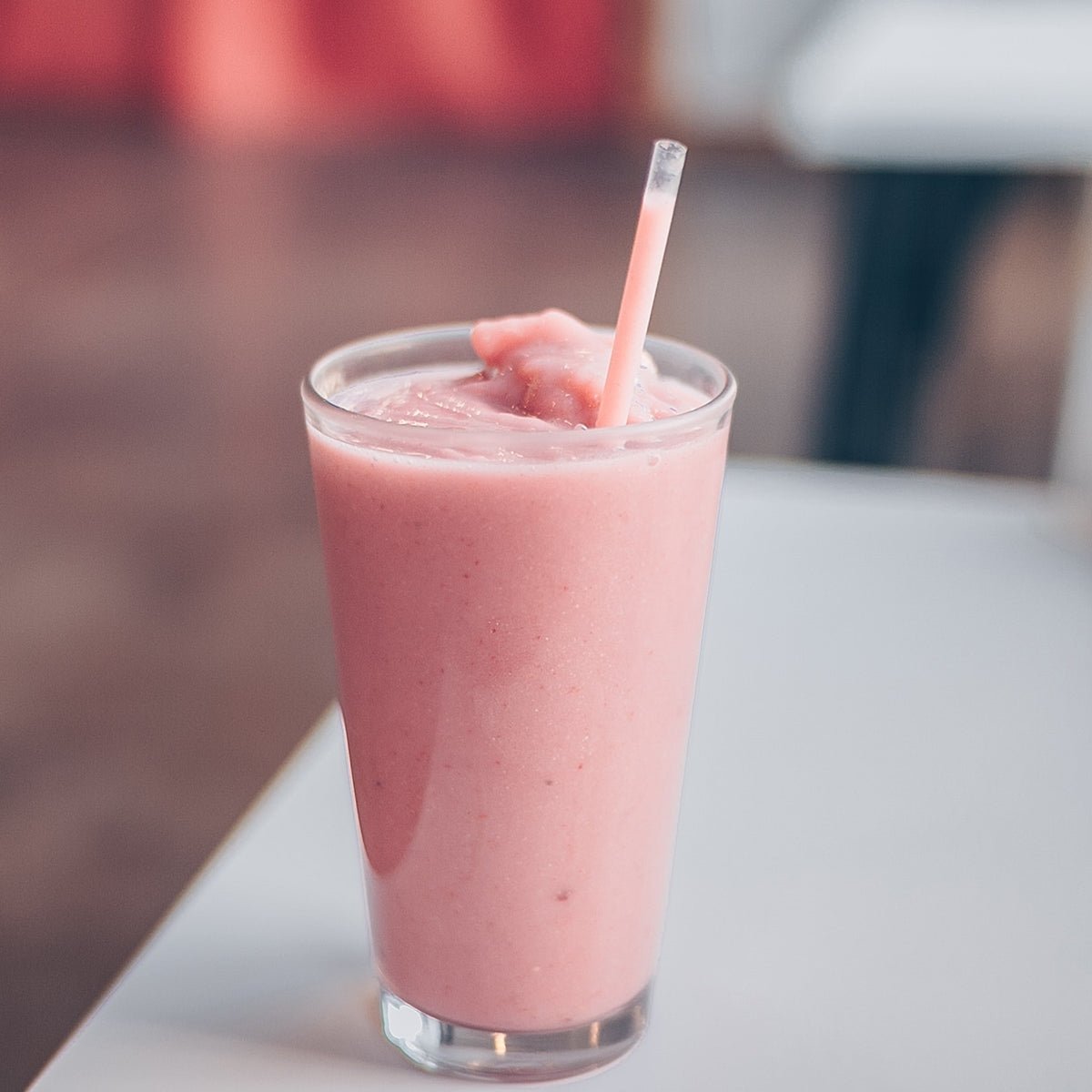“Call me old-fashioned, but I prefer food from a field rather than a factory. I want to eat what a farmer produces, not a lab tech.” – Jim Mullanaphy
Processed Foods are evil! … Right? Well, of course! They must be, The Paleo Diet is built on a foundation of avoiding processed foods! Isn’t it? We are taught only to eat foods that “a caveman would have eaten,” and processed foods didn’t exist in the Paleolithic era, so there was no way a caveman could have eaten them! Seems like a valid point. However, the truth in that statement hinges on the answer to one crucial question: What, exactly, is the definition of “processed?”
In this context, the exact definition (according to Google) is as follows: “to perform a series of mechanical or chemical operations on (something) in order to change or preserve it.” Sounds pretty evil to me! For the sake of argument, let’s dig a little deeper: In the case of processed foods, the big scary words in this definition would be, “chemical” and “preserve.”
Nobody wants chemicals or preservatives in their foods, at least, not those of us who adhere to a Paleolithic Diet. It’s pretty safe to say that if a food is altered using chemicals in order to preserve it, it’s definitely a “processed food.”
![]()
Now, let’s explore a hypothetical scenario: What if we were to remove any and all mention of chemicals and preservatives from the definition of the word “process.” What would that mean for the food industry? If all processed foods consisted of Paleo-friendly, whole food ingredients that had been altered using modern day technology (i.e. machines) with no added chemicals; would those foods still be considered Paleo-friendly?
If the answer to this question is, “no,” then we are in big trouble! Think of all the coffee beans that you’ve thrown in a grinder, all of those poor blueberries you pulverized in your blender, those helpless eggs you’ve burned alive in your skillet. By this logic, all of those foods would also be considered “processed.” The devil is in the details.
Don’t get me wrong; I am in no way advocating the use of the typical processed foods we see on the shelves of grocery stores, toting absurd claims like “Heart Healthy!” “Low-Carb!” “Low Fat!” and my personal favorite, “Great for kids!” If I had my 15 minutes of fame, I would use it to denounce those food manufacturers in a heartbeat, and demand their leaders be arrested and tried for the crime of mass genocide… But I digress, that’s another issue for another article.
When my company, Clovis, launched “The Perfect Paleo Powder,” a user left a comment on our Facebook page that stated, “I didn’t know cavemen drank protein shakes…”
I laughed out loud. 1. Because this guy was clever, and 2. Because his comment was absurd. This cliché term, “The Caveman Diet” is just an incredible oversimplification of what Paleo actually is, and it’s damaging, to say the least. It’s a term that’s comical enough for the average person to write us off as, “those crazy CrossFit people with their Caveman food!”
That’s not just bad for us; it’s bad for them. It means they will never dig deeper and learn about the wonderful principles of a Paleo-style diet and all of the countless health benefits it brings! For most people living on a standard Western Diet, this concept of only being able to eat what Cavemen ate seems like an impossible task, so they never even try. Instead of focusing on all of the foods you can’t eat, why not focus on finding ways to create new food products that you can?
 You know what else they were? Dumb. I mean, really dumb. If you traveled back in time and tried to teach a caveman how to use Instagram, you’d probably catch a spear in the neck. Call me crazy, but it just seems a bit hypocritical to demonize foods that cavemen didn’t have access to, by commenting on Facebook pages from your iPhone 6. We are not Cavemen! I don’t care how long your beard is. Although, I do understand the attraction to “living like a caveman,” a rough, rugged hunter-gatherer type, and I know why some Paleo Dieters and CrossFit athletes want to emulate that and wear it like a badge of honor. I get it; cavemen were tough.
You know what else they were? Dumb. I mean, really dumb. If you traveled back in time and tried to teach a caveman how to use Instagram, you’d probably catch a spear in the neck. Call me crazy, but it just seems a bit hypocritical to demonize foods that cavemen didn’t have access to, by commenting on Facebook pages from your iPhone 6. We are not Cavemen! I don’t care how long your beard is. Although, I do understand the attraction to “living like a caveman,” a rough, rugged hunter-gatherer type, and I know why some Paleo Dieters and CrossFit athletes want to emulate that and wear it like a badge of honor. I get it; cavemen were tough.
My point here is this: if we continue to allow our lifestyle choice to be referred to as “The Caveman Diet,” then The Paleo Diet will never have a chance to evolve properly. If we want truly to make a positive impact on the lives of others, then evolve we must.
The top selling foods in American grocery stores are processed. (1) Which confirms, without a doubt, that Americans consistently choose convenience and cost over nutrition. Not only is convenience and cost dictating the sale of groceries, but they are also the most common excuses people use when trying to explain why their diets are so unhealthy. “I don’t have time to cook!” and “I can’t afford to buy organic!” are the “go-to” responses for anyone looking for a reason to reject a healthier lifestyle. If the vast majority of Americans are not willing to sacrifice their money and time for nutrition, then maybe it’s time for us to try a new approach.
Instead of continuing to attack the dietary choices of others, why not brainstorm ways to make Paleo foods available to the masses, using innovative technology to create new Paleo products that could actually survive on the shelves of a grocery store?
Enter: Technology. If a machine grinds organic cacao beans into a fine powder, is that powder not Paleo? If organic coconut water is freeze-dried, using no added chemicals, is it no longer Paleo? If monk fruit is crushed and infused with hot water, is it somehow no longer monk fruit? Of course not. Man-made machines may have altered their appearance, but these foods are still Paleo. These are all real-world examples of what I call “Modern Paleo.” Not only do these Paleo-friendly processing methods exist, but they are also already being implemented by a growing number of companies around the world.
I’ll give you another real-world example of Modern Paleo, as it relates specifically to CrossFit: many CrossFit athletes with high training frequencies use post-workout supplements. Namely “Whey Protein,” and with good reason. If you’re following a time-consuming training regiment while trying to manage a 40-hour workweek, you’re going to need some help getting all of the nutrients you need to recover properly.
I understand the need; I just don’t understand the logic. Athletes who have dedicated a huge portion of their lives to working towards optimal health and performance are suddenly making the same decision the rest of America makes… Consuming extremely cheap, low-quality ingredients for the sake of convenience. These athletes are downing a performance-killing mixture of casein, whey, and artificial sweeteners, on a daily basis, just because they think it’s their only option.
This is where the concept of Modern Paleo changes the game. Innovative companies are using new technologies to create new products on a molecular level. A process called “hydrolysis” allows technicians to isolate proteins, peptides, and amino acids in meat using an amazing liquid called… Water. That’s right; our old friend H20 is making the need for chemical processing obsolete. By adding water molecules to beef, chemical bonds can be separated and what you’re left with are isolated proteins or beef protein hydrolysate. Once these proteins are dried, they take the form of a powder, which is extremely easy to digest, even for those suffering from gastrointestinal issues.

It’s just as convenient as Whey Protein, without all of the embarrassing side effects, like bloating and gas. Considering the fact that 65% of the entire human population has a reduced ability to digest lactose after infancy (2), it’s hard to understand why anyone would choose traditional whey as their post-workout drink of choice.
If you’re a high-performance athlete, constantly demanding the very best from your body, it’s time you start demanding the best from manufacturers.
There’s only one problem with Paleo-friendly processing methods: they are very expensive. Let’s face it; the big food manufacturing companies are in the business of making a profit and Paleo processing methods, and whole food ingredients are astronomically more expensive than the cheap ingredients and manufacturing methods these companies currently use. As long as people continue to buy their inferior-quality products, those companies will continue to use the cheapest methods and ingredients they can get away with.
Matter of fact, when I first came up with the formula for The Perfect Paleo Powder, I presented it to 36 different manufacturing facilities in 6 different countries… All of them flat-out refused to even try! All except for one, of course, and here we are. It was frustrating, yes, but as long as some pioneers are willing to break the mold, all hope is not necessarily lost. It is the consumer that can shift the tides, and force the hand of big food companies to improve their manufacturing methods and create better products. It’s all a matter of supply and demand.
Not long ago, Organic produce was a very niche market. As the masses learned of the health benefits and started demanding organic products in their local grocery stores, the big companies had no choice but to give their customers what they wanted. These days, you’d be hard pressed to find a grocery store that doesn’t have a designated Organic section. The same result could potentially happen with processed Paleo foods. In fact, it’s already begun, with the unprecedented growth of the “gluten-free” market.
Celiac disease alone affects an estimated 3 million Americans (3), and Huffington Post reports that nearly 1/3 of all American adults are actively avoiding gluten (4). In 2014 alone, Americans spent $973 million on gluten-free food products (5). The numbers are impressive, but the quality still isn’t there. Most of those gluten-free products are packed with processed carbohydrates and artificial sweeteners, making them almost as toxic as their gluten-containing counterparts. For that matter, even most of the Paleo products available in grocery stores have so much honey and other natural sweeteners added to them that the sugar content rivals that of Coca-Cola.
We can do better, trust me. If we work together and focus our efforts, we can and will see a positive change. Just think of how many people would benefit if our grocery store shelves were stocked with convenient and affordable Paleo-friendly foods!
I will leave you with this final thought:
If the Paleo community continues to look at modern food technology as evil, we will never transcend the current state of America’s food industry. It is time for us “Cavemen” to evolve.
Sources:




Share:
Diary of a Triathlete
Build a Better Butt